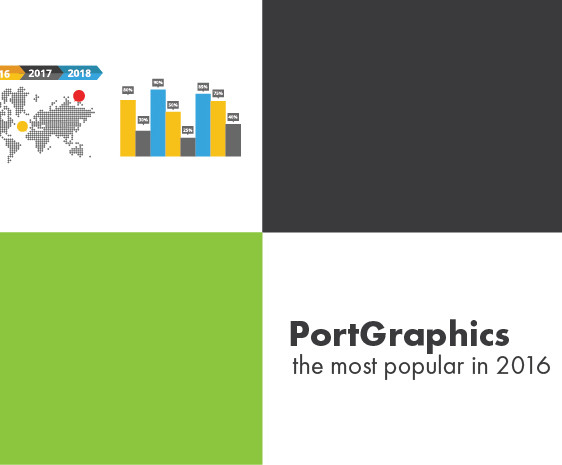PortEconomics is celebrating the ending of 2016 recapping the articles that have captured the interest of the visitors of our web initiative so far for 2016.
Our most popular papers on PortGraphics in 2016 were:
1. PortGraphic: top 15 european container ports in 2015
The PortGraphic of PortEconomics co-director Theo Notteboom shows the top 15 container ports in the European Union in 2015 based on container throughput expressed in TEU. It also includes container growth figures compared to 2014 and pre-crisis year 2007. What can we observe? [Link]
2. PortGraphic: alliances in container shipping-impact of Korean/Japanese carrier dynamics
Since 2015 four alliances are operational in the container shipping market: 2M, Ocean Three, CKY(H)E and G6. The merger of China Shipping and Cosco to form China Cosco Container Lines (COSCOCS) and the acquisition of APL/NOL by CMA CGM were the first major market changes signalling major changes in the current alliance structure. By Q2 of 2017, the new alliance landscape would include the 2M alliance and two new large-scale alliances, i.e. the Ocean Alliance and THE Alliance, comments PortEconomics co-director Theo Notteboom. [Link]
3. PortGraphic: dynamics in alliance formation in container shipping
Alliances are about operational vessel-sharing co-operation between container shipping companies on multiple trade routes (mostly east-west). The first strategic alliances between shipping lines date back to the mid-1990s, a period that coincided with the introduction of the first post-Panamax containers vessels on the Europe-Far East trade. The alliance partnerships evolved as a result of mergers and acquisitions (e.g. merger between P&OCL and Nedlloyd and the take-overs by P&O Nedlloyd and SeaLand by Maersk) and the market entry and exit of liner shipping companies, analyses PortEconomics co-director Theo Notteboom. [Link]
4. PortGraphic: chinese, EU & north american container port regions: 1985-2015
The PortGraphic of PortEconomics co-director Theo Notteboom shows the evolution of container throughput in the three main container port regions in China (i.e. Yangtze River Delta, Pearly River Delta and the Bohai Rim). Theo compares these volume dynamics with some key port systems in North America and Europe: the port system along the North American West Coast including ports such as Seattle/Tacoma, Vancouver, LA, Long Beach and Oakland; East coast ports such as Norfolk, Charleston, New York/New Jersey, Baltimore, Savannah and Halifax; the Hamburg-Le Havre port range consisting of key north-European container ports such as Rotterdam, Antwerp, Hamburg, Bremerhaven, Le Havre, Zeebrugge and Wilhelmshaven; and the West Mediterranean including Med ports in Spain, France, Italy and Malta, and Adriatic ports. [Link]
5. PortGraphic: economic crisis and ports – the Greek case
The Greek economy is going through the eighth year of economic recession as the economic crisis in Greece started at the end of 2008 and continues today. In this environment, Greek ports tried to respond to a series of challenges such as the reduction in consumption in the internal market, the reduction in the competitiveness of the Greek economy as well as some inherent challenges such as the resuction of ports personnel. The PortGraphic of PortEconomics member George Vaggelas outlines how Greek ports (and more specifically the 12 ports operating as Societe Anonymes) performed during this period of economic uncertainty. The analysis is based on the throughput and economic data official released by the respective port authorities. [Link]
6. PortGraphic: measuring and sharing cruise port users’ perspectives in the Med
Mediterranean cruise ports have gone a long way in measuring the perspectives of their users. PortEconomics members Thanos Pallis and Aimilia Papachristou PortGraphic details a survey of 71 cruise ports in the Med and its adjoining seas, the second biggest cruise region of the world. The PortGraphic reveals that the measurement of users’ satisfaction has turn to a standard practice for most cruise ports. [Link]












